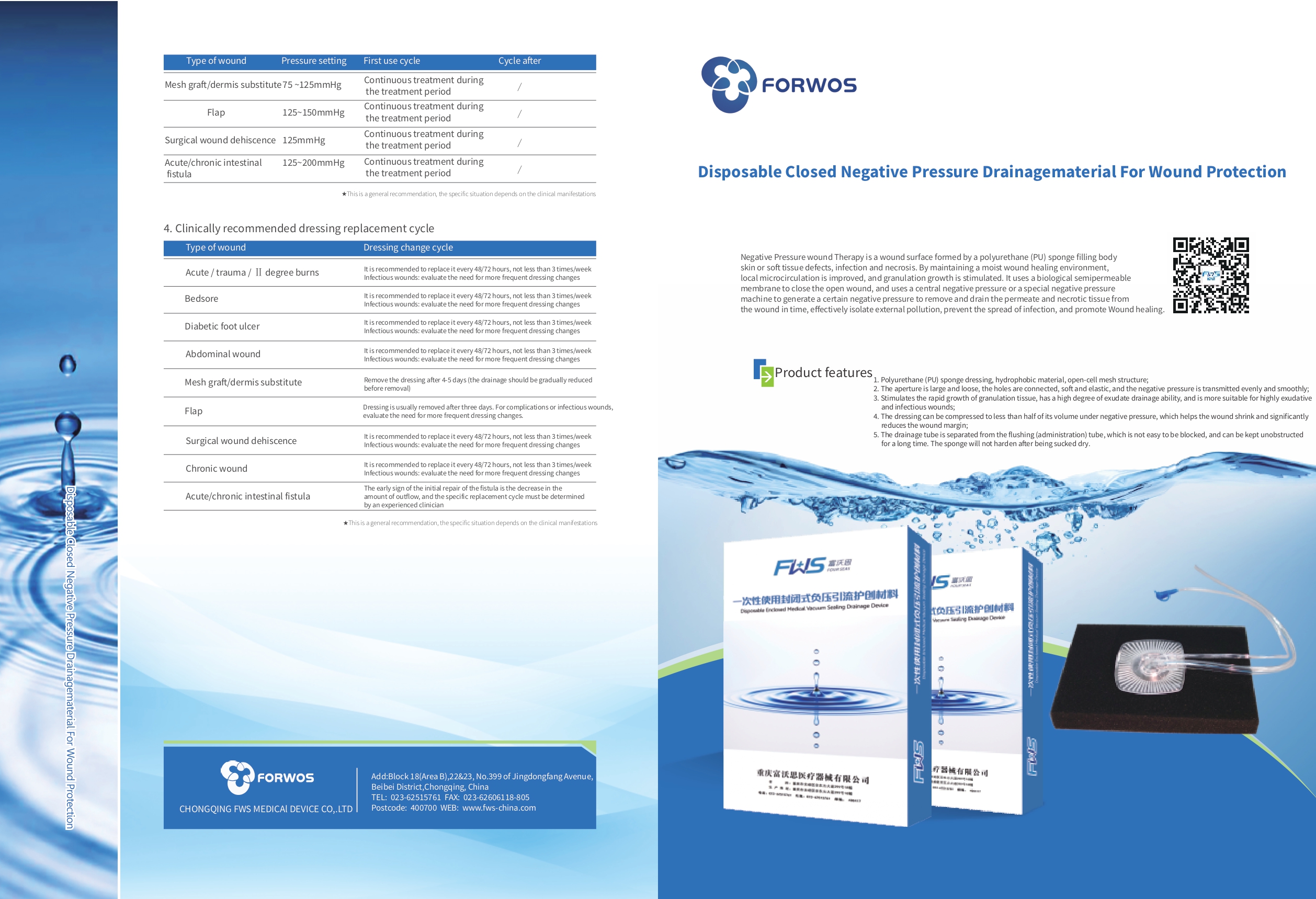- Debridement
Remove all necrotic tissues, debris and foreign bodies, ensure that the wound is thoroughly cleaned, scrub the skin around the wound with sterile saline, and then dry it with clean gauze to ensure that the wound and surrounding skin are clean and dry;
- Shaping
According to the shape and size of the wound, trim the shape of the polyurethane (PU) sponge to completely cover or fill the wound;
- Film sealing
Trim and place the bio-semipermeable membrane so that it can cover the dressing and extra 2~3 cm beyond the edge of the wound, and stick the membrane smoothly;
- Cut the hole
Lift the center of the pasted semipermeable membrane, and use surgical scissors to cut a hole with a diameter of about 2 to 3 cm in the center of the membrane (note that it is not cut into a gap, otherwise it will be automatically sealed);
- Place the suction cup
Tear the film backing paper around the suction cup; align the center of the suction cup with the center of the cut hole, place the suction cup and stick the film smoothly;
- Connect the negative pressure source
Connect the suction cup connector with the suction connection pipe; connect the flushing fluid connector with the suction cup flushing pipe connector, connect the negative pressure after the connection is completed, and the operation is completed.
Surface wounds, especially chronic wounds: such as soft tissue contusions of limbs, venous ulcers of lower limbs, chronic osteomyelitis with long-lasting wounds, etc.;
Bedsores, diabetic foot ulcers; various burn wounds; plastic skin graft wounds, etc.





